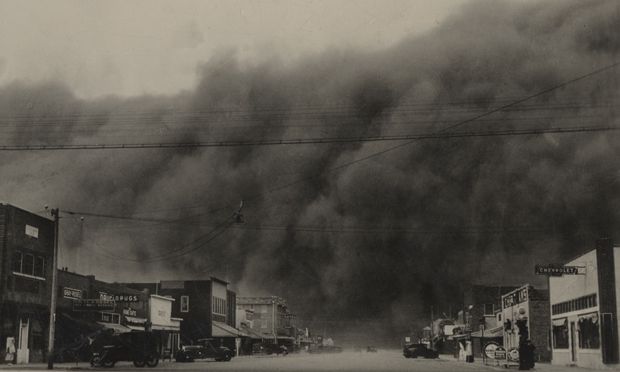
Known as America’s heartland and as the breadbasket of the world, the Great Plains area is a beautiful place, but one prone to an astonishing array of severe weather and natural disasters, which often seem to appear out of nowhere to disrupt the peace of the prairies. From blizzards to tornadoes to hailstorms, the people of the Great Plains are used to facing the worst of whatever Mother Nature can dish out. While Midwesterners are adept at shrugging off the kind of weather that could make many other Americans hole up in their homes, there have been occasions in history when natural disasters have hit the area at a terrible cost to crops, homes and human life. Here, we count down the top ten worst natural disasters of the Great Plains.
10. Dallas Hailstorm of 2012
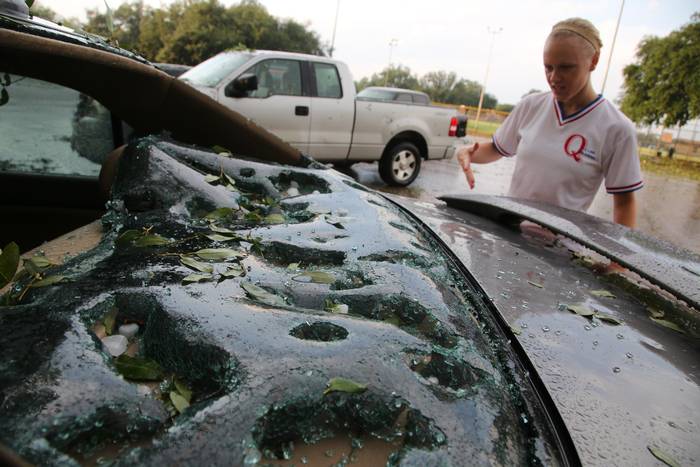
Tornadoes, blizzards and hurricanes tend to come to mind most often when people list disastrous storms, but hailstorms can also be incredibly damaging and deadly. One example is the Dallas hailstorm of 2012. Baseball-sized hail assaulted the northern part of Texas as part of a series of several strong thunderstorms, smashing through car windows, damaging homes and shattering the marquee of a landmark East Dallas movie theatre. Glass sculptures by a nationally recognized artist were among this storm event’s casualties. Though the storm left millions of dollars of damages in its wake, no serious injuries were reported.
9. Wichita Hailstorm of 1992
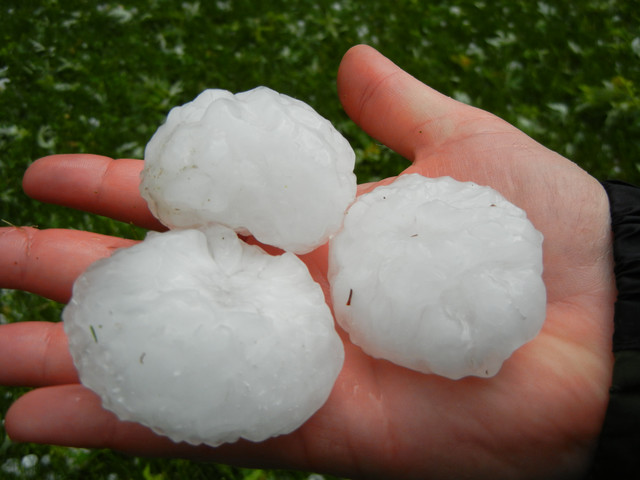
One of the worst storm episodes to strike within the borders of Kansas, the 1992 Wichita hailstorm was actually two separate thunderstorms that hit within six hours of one another on June 19, dumping hail 4.5 inches in diameter on the city of Wichita and the surrounding counties.
In terms of economic loss, the Wichita hailstorm ranks among the worse hailstorms in United States history. About $100 million worth of crops fell to the storm, with the area’s wheat fields sustaining near total losses. Additionally, this ferocious downpour destroyed at least $500 million of private property, including homes and automobiles.
8. Blizzard of 1949
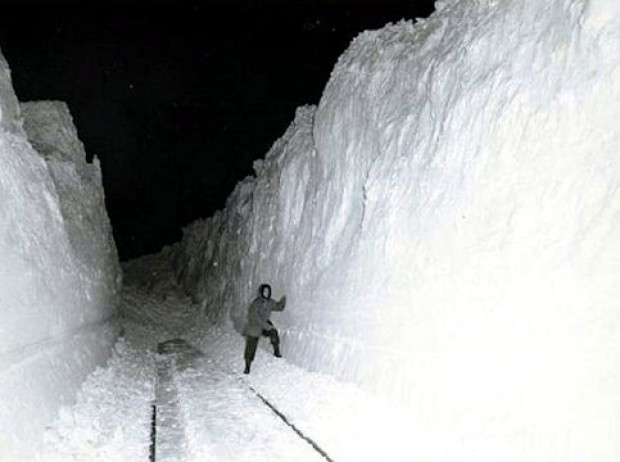
Winters are never easy in the Great Plains states, but Mother Nature unleashed some of her wintery worst in Nebraska in the year of 1948-49. After a mild autumn that proffered a bountiful harvest to the state’s corn and soybean farmers, the weather suddenly took a terrible turn that November.
On Nov. 18, a blizzard barreled its way into Nebraska, bringing torrential snow and sleet and winds of 50 to 70 mph with it. Schools and businesses were closed and roads blocked. On farms all over the state, livestock found themselves stranded in snow-smothered fields. Two feet of snow coated the northeastern part of Nebraska, and the area’s phone company reported that 1,700 telephone poles fell during the blizzard.
This storm, however, was only the beginning of a very long winter for the people of Nebraska. The snow left behind by this first blizzard had yet to completely melt when a second blizzard arrived for the new year. On Jan. 2, this second blizzard swept across western, central and Northern Nebraska with 50 to 60 mph winds. Stranded on isolated farms and ranches, the people living in the storm-affected areas relied on pilots to drop them groceries and supplies. Four people died as a result of the second storm.
The ordeal was still not over – the last two weeks of January brought freezing rain and more snow, while the last week in March saw a further 20 inches of snow and the flooding of the Big and Little Nemaha Rivers. On April 14, a final storm pelted south central and eastern Nebraska with another 12 inches of snow. By the end of this season of blizzards, parts of Nebraska were buried under 30-foot drifts of snow, some of which did not melt completely until June.
7. Dallas Hailstorm of 1995
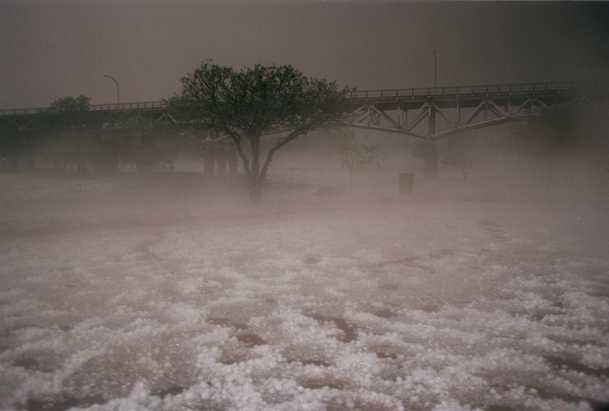
A little less than two decades before the Dallas hailstorm of 2012, the city suffered a similarly destructive and ultimately more deadly hailstorm in 1995. Sometimes referred to as the Mayfest storm, this supercell storm occurred over May 5-6, affecting a highly populated area and striking in the midst of an outdoor festival.
Accompanied by flash flooding and lightning, the 1995 Dallas hailstorm was the costliest hailstorm in United States history at the time. By storm’s end, the tally of damages added up to $1 billion. The driving hail began without much warning and killed at least 13 people, injuring about 100 others.
6. Oklahoma Tornado Outbreak of 1999
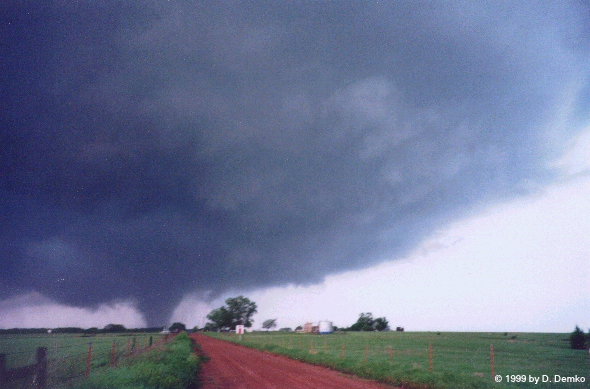
In an area with a long history of severe tornadoes, the 1999 Oklahoma tornado outbreak stands out for having produced the state’s greatest number of tornadoes in a single weather event. A total of 141 twisters tore their way across Oklahoma, Kansas, Arkansas, Texas and Tennessee over a 3-day period of time. The wave of storms began on May 3 and continued until May 6, with the most severe tornado activity taking place on May 3 in Oklahoma and Kansas, where 74 tornadoes touched ground in less than 21 hours. At one point that day, four tornadoes were spotted on the ground simultaneously.
The most significant tornado to occur on May 3, 1999 was rated as an F5, the highest conceivable rating on the Fujita Tornado Scale. It was tracked for almost an hour and a half as it cut a 38-mile swathe of damage from Chickasha, Oklahoma to Oklahoma City and the suburban areas of Bridge Creek, Newcastle, Moore, Midwest City and Del City. By the time the skies cleared, the rash of storms had killed 46 people, destroyed or damaged 8000 homes and caused nearly $1.5 billion in total damages. As terrible as these numbers are, the casualties could actually have been much higher, given the force and number of the storms. Modern technologies enabled storm researchers to warn the public of the impending tornadoes quickly and accurately, saving lives that in earlier times would likely have been lost.
5. Heat Wave of 1936
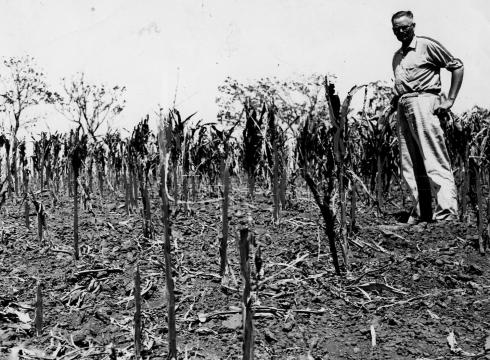
The hottest summer on record in the United States was the heat wave of 1936, when temperatures reached a sweltering 121 degree Fahrenheit in Steele, North Dakota on July 6, 1936. The heat wave, which took place during the height of the Dust Bowl, affected a total of eight states, and monthly records set during this weather pattern still stand in each of these states.
While such temperatures would be considered oppressively hot even today, in 1936, air conditioning was a relatively new invention, and not something to be found in the houses of the Midwest. As many as 5,000 deaths were blamed on the heat wave, with many people suffering from heat stroke and heat exhaustion. The elderly in particular suffered during this extreme weather.
4. Schoolhouse Blizzard of 1888
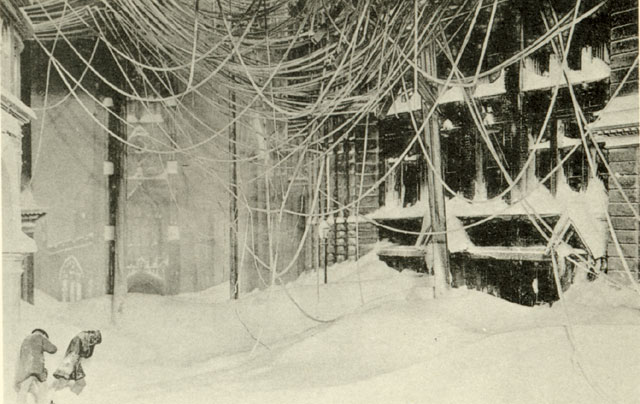
The winter of 1888 saw two deadly and brutal blizzards, one on the eastern seaboard and the other on the prairies of the upper Midwest. This second blizzard struck unexpectedly on January 12, and is often referred to as the Schoolhouse Blizzard or the Children’s Blizzard, in memory of the scores of children who were killed trying to find their way home in the storm.
The Schoolhouse Blizzard was so catastrophic in large part because it was so unexpected. On the morning of January 12, the weather was deceptively warm and clear. Parents sent their children off to school without any heavy coats, mittens or other winter gear. When the blizzard suddenly struck that afternoon, hammering the prairie towns with ferocious snow and raging winds, no one was truly prepared for it. The storm killed hundreds of people, a disproportionate number of them schoolchildren.
When the storm hit, many teachers were uncertain how to react. This was long before the advent of today’s byzantine snow day policies. Some teachers chose to hunker down with their young charges and await the passing of the storm. As temperatures fell rapidly and tiny schools houses were buried under snow, some of these teachers and students succumbed to hypothermia. Other teachers panicked and dismissed classes immediately, hoping that their students would be able to make it home ahead of the storm’s full brunt. In some cases, it proved a tragic miscalculation, with dozens of children getting lost and freezing to death in the blinding snow. Other storm victims included parents desperately searching the snow-smothered prairies for their kids.
3. Woodward Tornado of 1947
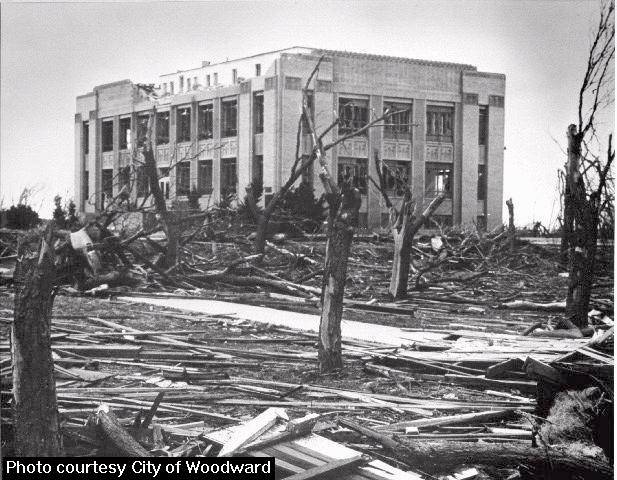
The deadliest tornado ever to hit in Oklahoma, a state that is no stranger to violent twisters, the Woodward Tornado claimed the lives of at least 106 people. It was in part because of the devastation wrought by this tornado that the Weather Bureau (now the National Weather Service) began its tornado watch and warning system in 1953.
Originating from a tornadic storm that began in the Texas panhandle and produced six tornadoes over a 220-mile area, the Woodward tornado traveled continuously over about 100 miles, at forward speeds of 50 mph. Rated an F5 on the Fujita Tornado Scale, it was 1.8-miles wide. The tornado wreaked its worst havoc in the city of Woodward, striking at 8:42 p.m. and demolishing over 100 city blocks. The tornado and the fires that raged in its wake destroyed over 1000 homes and businesses. At least 106 fatalities were reported, but due to the long-term confusion and chaos that followed the tornado, the exact death toll was never known for certain.
2. Heat Wave of 1988
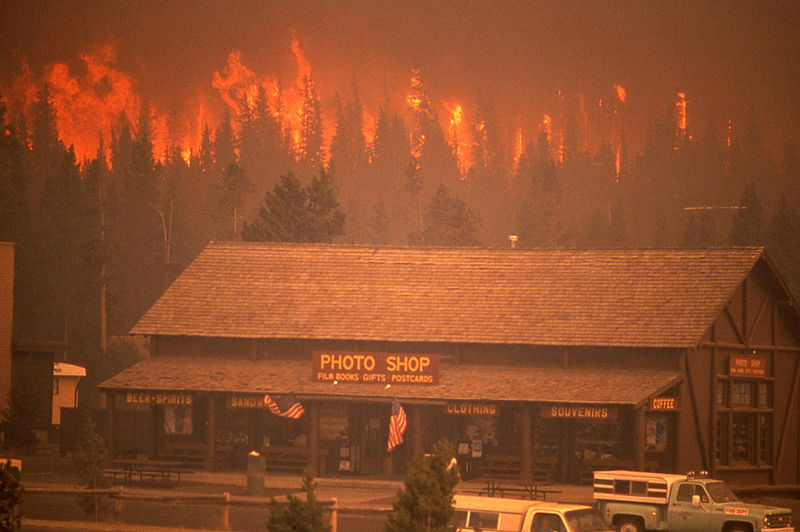
One of the worst and most destructive droughts in United States history occurred through 1988 to 1989, causing billions of dollars in damages. At its peak, the drought occupied 45 percent of the country. A deadly side effect of this weather disaster was a vicious heat wave over the summer of 1988, which was linked to the deaths of at least 4,800 and up to 17,000 people in the United States.
In many ways mirroring the heat waves that accompanied the Dust Bowl of the 1930s, the heat wave of 1988 concentrated its deadly effects on the central and eastern parts of the country. Meanwhile, forest fires broke out in Midwestern areas including Yellowstone Park, adding to the drought’s destructive toll. All told, the drought, heat wave and forest fires of 1988 added up to the costliest natural disaster in United States history prior to Hurricane Katrina.
1. Great Plains Tornado Outbreak of 1955
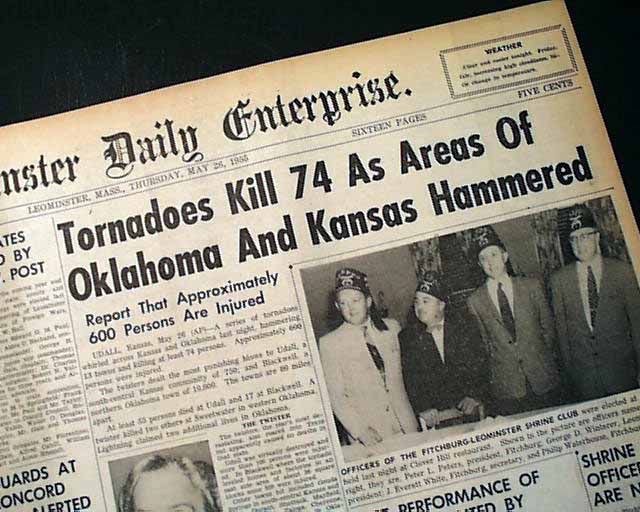
One F5 tornado is catastrophic in its own right, but in May 1955, the Great Plains states endured two F5 twisters and a total of 46 tornadoes in less than 48 hours. Spanning seven states and taking the lives of 102 people, this shocking spate of storms produced the Blackwell tornado, the eleventh deadliest tornado in Oklahoma’s history, and the Udall tornado, the worst tornado ever recorded in the state of Kansas.
The morning of May 25, 1955 dawned thunderous and windy, with damaging gales beginning in Kay County, Oklahoma between 8:30 and 9:00 a.m. to set the calamitous tone for the next two days. By that afternoon, additional storms across Oklahoma, Kansas and the Texas panhandle had given rise to a flurry of tornadoes. The first major tornado, rated as an F4, developed northwest of Wellington, Texas and then moved into Oklahoma, where it claimed the tornado wave’s first two fatalities. Just before 7:00 p.m., radar detected yet another thunderstorm emerging close to Oklahoma City. This was the supercell that would produce the Blackwell tornado. The twister first touched ground at around 9:00 p.m., barreling north and into Blackwell to destroy much of the east side of the town.
Within 30 minutes of the Blackwell tornado, the same supercell had spit out yet another F5 tornado, this one taking a northward path into Udall, Kansas. A funnel roughly 1300 yards in width slammed into the southern half of the town, leveling homes and buildings and killing 87 people – a full 20 percent of the town’s population. Almost half of the families living in Udall lost at least one member to the storm.
Over the next day, numerous other tornadoes would continue to occur across the Midwest, from Illinois to Arkansas. None would rival the magnitude of the previous day’s tornadoes, but the heavy rain that followed in Blackwell would complicate rescue efforts there.
Bonus: The Dust Bowl of the 1930s
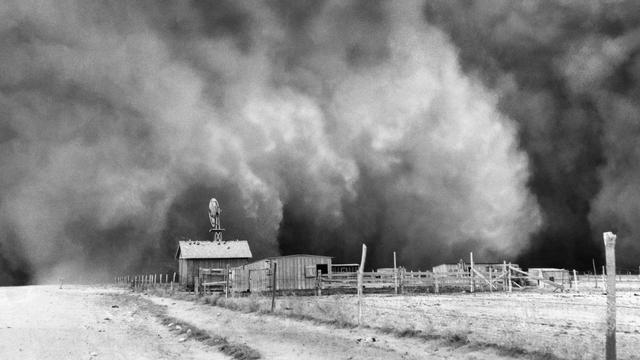
Natural disasters are most commonly thought of as singular events or as a series of related episodes that occur over a short period of time, and we’ve bowed to that convention in compiling this list. Nevertheless, the worst and most disastrous natural catastrophe ever to hit the Great Plains was the Dust Bowl of the 1930s. Spanning almost eight years, the Dust Bowl came in three major waves: The first in 1934, the next in 1936 and the last through 1939 to 1940. Caused by a severe drought and exacerbated by the farming methods of the time, which did not include such preventative measures as crop rotation or cover crops, the Dust Bowl did severe ecological and economic damage to the prairie states of the United States and Canada. Winds picked up huge clouds of dust and sand, blowing the soil away from farmlands in dust storms called black blizzards that were big enough to black out the sun. Hundreds of thousands of former farmers from the Great Plains wandered into California, working as migrant workers at starvation wages. John Steinbeck immortalized the lives of such workers in “The Grapes of Wrath” and “Of Mice and Men.”
 Follow
Follow